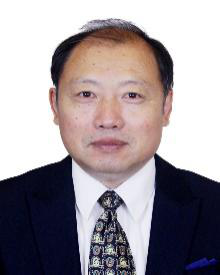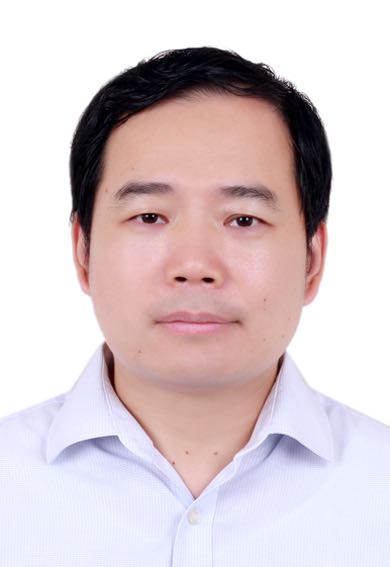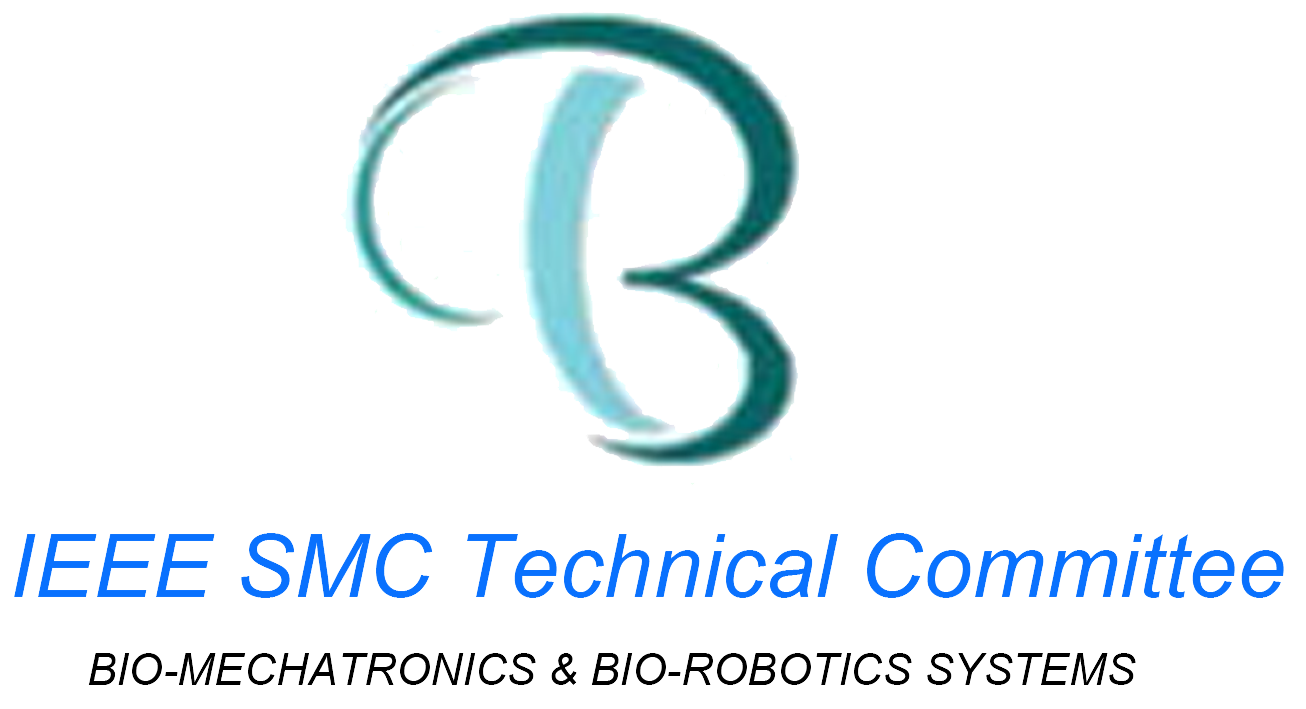KEYNOTE TALKS
Wednesday, July 3, 2019
Venue: Toyonaka Campus
| TIME | SESSIONS |
| 10:50-11:20 | KEYNOTE 1 Title: RPR-equivalent Parallel robots: Design and Application Qinchuan Li, Zhejiang Sci-Tech University, China |
| 11:20-11:50 | KEYNOTE 2 Title: Nonlinear Control of Underactuated Systems Yongchun Fang, Nankai University, China |
Thursday, July 4, 2019
Venue: Toyonaka Campus
| TIME | SESSIONS |
| 10:00-10:30 | KEYNOTE 3 Title: Culturally Competent Elderly Care Robots in a Smart ICT Environment Chong Nak-Young, Japan Advanced Institute of Science and Technology, Japan |
| 10:50-11:20 | KEYNOTE 4 Title: Cloud Control System Yuanqing Xia, Beijing Institute of Technology, China |
| 11:20-12:00 | KEYNOTE 5 Title: Wearable Walking Assist Robots for the Elderly: Opportunities and Challenges Shijie Guo, Hebei University of Technology, China |
Friday, July 5, 2019
Venue: Toyonaka Campus
| TIME | SESSION |
| 9:40-10:10 | KEYNOTE 6 Title: Advances in research on wearable robots for rehabilitation and mobility enhancement Xinyu Wu, Shenzhen Institutes of Advanced Technology,Chinese Academy of Sciences, China |
| 10:30-11:00 | KEYNOTE 7 Title: Robotic Perception: From Multi-Modal Fusion to Active Perception Huaping Liu, Tsinghua University, China |
11:00-11:30 | KEYNOTE 8 Title: Magnetic swimming microrobots: fabrication, control, and applications Hui Xie, Harbin Institute of Technology (HIT), China |
| 11:30-12:00 | KEYNOTE 9 Title: Intelligent Control of Bionic Flapping-Wing Robotic Aircraft Wei He, University of Science & Technology Beijing, China |
Keynote Speakers
Qinchuan Li, Professor, Zhejiang Sci-Tech University, China
RPR-equivalent Parallel robots: Design and Application
Abstract: RPR-equivalent parallel robots are presented, which can perform two rotations and one translation as a RPR serial chain. The proposed new parallel robots have advantages of specified rotation axis, simple kinematic model, which are beneficial to control and calibration. More importantly, these mechanisms can be fully or partly actuated with fixed linear actuators, leading to high stiffness, good dynamic response and high payload capability. To eliminate singularities and further improve stiffness, redundantly actuated RPR-equivalent parallel robots are constructed by adding proper kinematic chains on non-redundant ones and keeping necessary geometrical conditions. The proposed mechanisms are suitable to be used in the development of hybrid or parallel five-axis machining centers requiring good stiffness, high accuracy and manipulability.
Biography: Prof. Qinchuan Li received the B.S. degree in fluid power transmission and control from Yanshan University, Hebei province, China, in 1997, and the Ph.D. degrees in mechanism design and theory from Yanshan University in 2003. He is currently a professor and director of Robotics Lab at Zhejiang Sci-Tech University, Hangzhou, China. His research interests include robotics and mechanism design, particularly parallel manipulators, covering topology design, kinematics, dynamics and some applications. Prof. Li is the recipient of the 2015 National Science Fund for Distinguished Young Scholars from the National Natural Science Foundation of China.
Wei He, Professor, University of Science & Technology Beijing, China
Intelligent Control of Bionic Flapping-Wing Robotic Aircraft
Abstract: The bionic flapping-wing robotic aircraft is inspired by the flying ways of birds, which is regarded as a rigid-flexible coupling system. Our research focuses on the control system design of the aircraft, which makes the aircraft have great advantages such as high flexibility, low energy consumption and so on. However, flexible wings might produce the unexpected vibration and deformation under the influence of air flow. The vibration will degrade the flight performance, even shorten the lifespan of the aircraft. Therefore, designing an effective control method for suppressing vibrations of flexible wings is significant in practice. We have made several flapping-wing robotic aircraft for experiments. The control system is designed for vibration control and autonomous flying of the flapping-wing robotic aircraft.
Biography: Professor Wei He received his PhD from Department of Electrical & Computer Engineering, the National University of Singapore (NUS), Singapore, in 2011, both his M.Eng. and B.Eng. degrees from South China University of Technology (SCUT), Guangzhou, China, in 2008 and 2006 respectively. He is currently working as the Full Professor at School of Automation and Electric Engineering, University of Science and Technology Beijing (USTB), China. He has co-authored 3 books published in Springer and published over 100 international journal and conference papers. He was awarded a Newton Advanced Fellowship from the Royal Society, UK in 2017. He was a recipient of the IEEE SMC Society Andrew P. Sage Best Transactions Paper Award in 2017. He is serving the Chair of IEEE SMC Society Beijing Capital Region Chapter. From 2018, he has been the founding chair of Technical Committee on Autonomous Bionic Robotic Aircraft (TC-ABRA), IEEE Systems, Man and Cybernetics Society. He is serving as the Associate Editor of IEEE Transactions on Neural Networks and Learning Systems, IEEE Transactions on Control Systems Technology, IEEE Transactions on Systems, Man, and Cybernetics: Systems, and IEEE/CAA Journal of Automatica Sinica, and Editor of Journal of Intelligent & Robotic Systems. His current research interests include robotics, distributed parameter systems and intelligent control systems.
Yongchun Fang, Professor, Nankai University, China
Nonlinear Control of Underactuated Systems
Biography: Dr. Yongchun Fang is the head of the College of Artificial Intelligence, Nankai Univeristy, and also a Yangtze River Distinguished Professor of the Chinese Minister of Education. Dr. Fang received the B.S. degree in electrical engineering and the M.S. degree in control theory and application, both from Zhejiang University, P. R. China, in 1996 and 1999, respectively, and the Ph.D. degree in electrical engineering from Clemson University, SC, USA in 2002. From 2002 to 2003, he was a Postdoctoral Fellow at the Mechanical and Aerospace Engineering Department, Cornell University. Since 2003, he has been a professor at the Institute of Robotics and Automatic Information System, Nankai University, Tianjin, P. R. China. Dr. Fang’s research interests include underactuated systems control, visual servoing, AFM-based nano-manipulation, and so on. He won the very prestigious “National Distinguished Young Scholars” Award from National Science Foundation of China (NSFC) in 2013.
Abstract: Compared with fully actuated systems, underactuated systems present such advantages as simpler structure, broader applications, and so on. Yet the control of this kind of system proves to be a very challenging problem due to the underactuated property. This talk mainly introduces the recent results on the nonlinear control of various underactuated systems, firstly for overhead cranes, later on extended to other systems such as offshore boom cranes, quadrotor transportation systems, and so on. Finally, the designed control strategy is successfully applied to a 32 tons industrial overhead crane to achieve full-automatic operation.
Hui Xie, Professor, Harbin Institute of Technology (HIT), China
Magnetic swimming microrobots: fabrication, control, and applications
Abstract: Living systems organized in a coordination manner can solve complex problems and complete a task that goes beyond individual’s capabilities. For example, a colony of ants can collectively achieve complex tasks such as constructing nests and gathering a large prey. Swimming microrobots that are energized by external magnetic fields exhibit a variety of intriguing collective behaviors, ranging from dynamic self-organization to coherent motion; however, achieving multiple, desired collective modes within one colloidal system to emulate high environmental adaptability and enhanced tasking capabilities of natural swarms is challenging. This talk presents methods for fabrication and motion control of magnetic swimming microrobots, as well as a strategy that uses alternating magnetic fields to program hematite colloidal particles into liquid, chain, vortex, and ribbon-like microrobotic swarms and enable fast and reversible transformations between them. What makes more sense is that the chain is characterized by passing through confined narrow channels and the herring school-like ribbon procession is capable of large-area synchronized manipulation, while the colony-like vortex can aggregate at a high density towards coordinately handling heavy loads. This regulated microrobot swarm provides potential solutions for biomedical applications, such as imaging and targeted drug delivery.
Biography: Hui Xie is a professor in the State Key Laboratory of Robotics and Systems, School of Mechatronics Engineering at Harbin Institute of Technology (HIT), Harbin, China. In 2006, Xie received Ph.D. degree in Mechatronics Engineering from Harbin Institute of Technology, Harbin. His current research interests include micro and nanorobotics, nanomanipulation and characterization, AFM three-dimensional micro and nano CD metrology, AFM multiparametric imaging and characterization of complex cellular and biomolecular systems under physiological conditions, and swimming micro and nanorobots (swarms). His work was partly supported by the China National Science Fund for Excellent Young Scholars (2012) and the Program for New Century Excellent Talents by the Ministry of Education of China (2012).
Nak Young Chong, Professor, Japan Advanced Institute of Science and Technology, Japan
Culturally Competent Elderly Care Robots in a Smart ICT Environment
Abstract: Rapid demographic change constitutes an unprecedented societal challenge for Japan. I will shed light on the issues of Japan’s super-aging society and introduce the human-robot interaction work package of our ongoing EC Horizon 2020 project “CARESSES”, aiming at developing culturally competent elderly care robots, jointly commissioned by the Ministry of Internal Affairs and Communications of Japan. We envision a future where socially assistive robots are able to interact with the elderly with different cultural and personality traits through personalized emotion generation and facial/vocal/body expression. Specifically, robots are able to autonomously re-configure their way of acting and speaking, when offering a service, to match the culture, customs, and etiquette of the person they are assisting. By designing robots that are more sensitive to the user’s needs, our innovative solution will offer elderly clients a safe, reliable, and intuitive system to foster their independence and autonomy, with a greater impact on quality of life, a reduced caregiver burden, and an improved efficiency and efficacy. I will share some of our preliminary results of multi-modal human-robot interaction and explore opportunities for future collaboration with people from diverse social and cultural groups. Furthermore, I will introduce a smart ICT environment testbed iHouse, and a user speech activated interface to enable an off-the-shelf robot to gain control over the iHouse devices and functions and provide data through verbal interaction with the user. I am hoping to discuss the technical feasibility of a robotic smart care home interface toward supporting independent living of the elderly.
Biography: Nak Young Chong received the B.S., M.S., and Ph.D. degrees in mechanical engineering from Hanyang University, Seoul, Korea, in 1987, 1989, and 1994, respectively. From 1994 to 2007, he was a member of research staff at Daewoo Heavy Industries and KIST in Korea, and MEL and AIST in Japan. In 2003, he joined the faculty of Japan Advanced Institute of Science and Technology, where he currently is a Professor of Information Science. He also served as Vice Dean for Research and Director of the Center for Intelligent Robotics at JAIST. He was a Visiting Scholar at Northwestern University, Georgia Institute of Technology, University of Genoa, and Carnegie Mellon University, and also served as an Associate Graduate Faculty at the University of Nevada, Las Vegas, International Scholar at Kyung Hee University, and Distinguished Invited Research Professor at Hanyang University. He serves as Senior Editor of the IEEE Robotics and Automation Letters, Journal of Intelligent Service Robotics, International Journal of Advanced Robotic Systems, and serves/served as Senior Editor of UR 2018/2019, IEEE ICRA, IEEE Ro-Man, IEEE CASE Conference Editorial Boards, and Associate Editor of the IEEE Transactions on Robotics. He served as Program Chair/Co-Chair for JCK Robotics 2009, ICAM 2010, IEEE Ro-Man 2011, IEEE CASE 2012, IEEE Ro-Man 2013, URAI 2012/2013, and DARS 2014. He was a General Co-Chair of URAI 2017 and will be serving as a General Chair of UR 2020. He also served as Co-Chair for IEEE-RAS Networked Robots Technical Committee from 2004 to 2006, and Fujitsu Scientific System Working Group from 2004 to 2008.
Shijie Guo, Professor, Hebei University of Technology, China
Wearable Walking Assist Robots for the Elderly: Opportunities and Challenges
Abstract: Population aging has imposed a heavy social burden over the world, especially in the developed countries. Many elderly persons suffer from walking difficulties caused by the decline of lower limb skeletal muscles, which is known as sarcopenia. As a result, they perform shorter and fewer walking activities compared with young ones. Such reduced walking activity may result in many psychosocial problems such as social isolation, unhappiness or depression, and furthermore, it is not conducive to maintaining their physical health. Thus, maintaining/improving walking ability is important for protecting the health and the quality of life of the elderly. Recently, wearable walking assist robots are attracting growing attention and a few kinds of lower limb exoskeletons have been commercialized for preventing the degradation of skeletal muscles of lower limbs of the elderly.
This talk will review the recent progress in the development of wearable walking assist robots for the elderly, including mechanical design, motion planning, perception of gait parameters and walking conditions, and the determination of assistive forces. However, there are still some challenges from the viewpoint of practical use. In addition to the engineering considerations such as light weight, easiness of taking on and off, safety and comfortableness, etc., the physiological influence on the wearer is also an important problem. Different from the exoskeletons that are designed to enhance the physical ability of the wearer for performing heavy tasks, such as weight bearing walking of a soldier, a walking assist robot for the elderly is designed for daily use for maintaining/improving walking ability. Such a robot is also different from the assistive devices that are designed for physically disabled people for compensating certain physical functions, such as the body supporting and leg moving functions to help a polio patient to stand up and walk.
The ultimate objective of a walking assist robot for the elderly is to maintain a healthy independent life for reducing the gap between health span and life span. Many muscles are involved in walking. In an assisted walk, the assistive force compensates the function insufficiency of some muscles. However, excessive assistance may cause decreases in muscle mass and in neuromuscular functions. Furthermore, the assistive force may bring burdens on other muscles to change the balance of motion. Thus, how to determine the assistive force and design the practice program, as well as how to implement the system in engineering, including walking state perception and motion control, are major concerns. A consideration of improving the walking pattern to an “ideal gait” by applying a weak assistive force will be discussed.
Biography: Dr. GUO Shijie got his Doctor’s degree in mechanical engineering from Tokyo Institute of Technology in 1992. He worked with Sumitomo Riko Ltd. and RIKEN-TRI Collaborative Research Center in Nagoya, Japan before he was back to China in 2015. He is currently the head of the Hebei Key Laboratory of Robot Perception and Human-robot Interaction, Hebei University of Technology in Tianjin, China. He also serves as a professor of the Institute of AI and Robotics in Fudan University, the principal scientist of the State Key Laboratory for Reliability and Intelligence of Electrical Equipment, and the editor in chief of the Journal of Hebei University of Technology. His research interests are nursing-care systems including transfer assistant robots, walking assist robots, smart care beds, unconstrained measurement of vital information for health care of the elderly. He holds over 60 papers and 29 authorized patents in his research field.
Xinyu Wu, Professor, Shenzhen Institutes of Advanced Technology,Chinese Academy of Sciences, China
Advances in research on wearable robots for rehabilitation and mobility enhancement
Abstract: With the great progress of robotic technology, wearable robots have developed rapidly over the last decades and have demonstrated their ability to assist humans in a wide range of military, medical, and industrial applications. For wearable robots, human friendly interface is the most important factor which eventually determines the applications both intensively and extensively. In essence, the purpose of developing wearable robots is to enhance human’s capability to some extent. Such wearable robots should be smart, lightweight, compact, and with the capability of being integrated into a daily living environment. Therefore, it can be expected that the state-of-the-art wearable robots with these characteristics will change our life deeply in the near future.
This report mainly focuses on a variety of wearable robots that we have developed, including intelligent lower-limb exoskeleton robots both for rehabilitation, and load-bearing, lumbar assistance exoskeleton, design and control of a tendon actuated soft exoskeleton, and also the flexible clothes climbing Clothbot. Lower-limb exoskeleton is widely used in rehabilitation training and walking assistance for paralyzed patients, or load-bearing for solders. The assistive upper-limb exoskeleton and lumbar exoskeleton, however, are mainly used for assisting the factory workers in carrying loads. The soft exoskeleton can provide active assistance with high flexibility and adaptability. Clothbot is a specially designed robot which can crawl on the surface of flexible materials. By a unique clamping mechanism, it can grab the wrinkles of flexible materials, and move on the flexible surface freely with a tail controlling moving directions as well as adjusting postures. Apart from that, my talk will also get involved in some other wearable systems developed in our lab such as intelligent glasses and shoes. We hope, through the introduction of our research, to bring up some new ideas and boost the development in the field of wearable robots.
Biography: Xinyu Wu, Professor, associate director of Shenzhen Institute of Advanced Integration Technology (SIAIT) and Center for Intelligent and Biomimetic Systems in Shenzhen Institutes of Advanced technology (SIAT), vice director of Key Laboratory of Human-Machine-Intelligence Synergic System of Chinese Academy of Sciences, director of Laboratory of Intelligent Robotic Systems in Shenzhen, received his B.E. and M.E. degrees from the Department of Automation, University of Science and Technology of China, and received his Ph.D degree from the Chinese University of Hong Kong. Recent 5 years, he has over 30 projects supported by the National Natural Science Foundation of China, the Foundation of National 863 Plan of China, Key Direction of Knowledge Innovation Project of Chinese Academy of Sciences, and etc. He has published over 150 papers in international robotic journals and conferences. He has obtained over 50 national and international patents. He is a board member of Instrument association of China, committee member of robot committee in Chinese Association of Automation, committee member of the Chinese Association of Young Scientists and Technologists. He is an important member in the organization committee for several international robotic conferences, such as chairman of organization committee for ICIST2014, chairman in program committee for ICIA2017, chairman in program committee for ICARCV2018, and etc.
Huaping Liu, Professor, Tsinghua University, China
Robotic Perception: From Multi-Modal Fusion to Active Perception
With the rapid development of advanced multi-disciplinary technologies for acquiring, storing and transmitting massive data, multi-modal information processing has recently attracted growing attention, both in academia and industry. Multimodal big data research challenges, particularly related to fusion and perception, are ubiquitous in diverse domains such as Internet of things, robotics, manufacturing, and medical informatics applications. The next-generation cognitive agents will require to be appropriately equipped with multi-modal information fusion and perception capabilities to carry out cognitive tasks such as perception, action, affective and cognitive learning and memorization, attention, decision making and control, social cognition, language processing and communication, reasoning, problem solving, and consciousness. In this talk, we present a unified framework which can be effectively deal with the challenging multi-modal fusion learning problems . Especially, we show that such a framework can also effectively solve the weakly-paired visual-auditorytactile fusion problem. Despite the recent successes in robotics, artificial intelligence and computer vision, a complete artificial agent necessarily must include active perception.
Biography: Huaping Liu received the Ph.D. degree from Tsinghua University, Beijing, China. He is an Associate Professor with the Department of Computer Science and Technology, Tsinghua University, Beijing, China. His current research interests include robotic perception and learning. Dr. Liu serves as an Associate Editor of some journals including the IEEE Transactions on Automation Science and Engineering, IEEE Transactions on Industrial Informatics, IEEE Robotics and Automation Letters, Neurocomputing, Cognitive Computation, and some conferences including ICRA, IROS. He also served as Area Chair of Robotic Science and Systems(2018), Publicity Chair of WCCI(2020), Senior Program Member of IJCAI(2018), etc. He is the receipt of Andy Chi Best Paper Award of IEEE Trans. on Instrumentation and Measurements (2017).




















